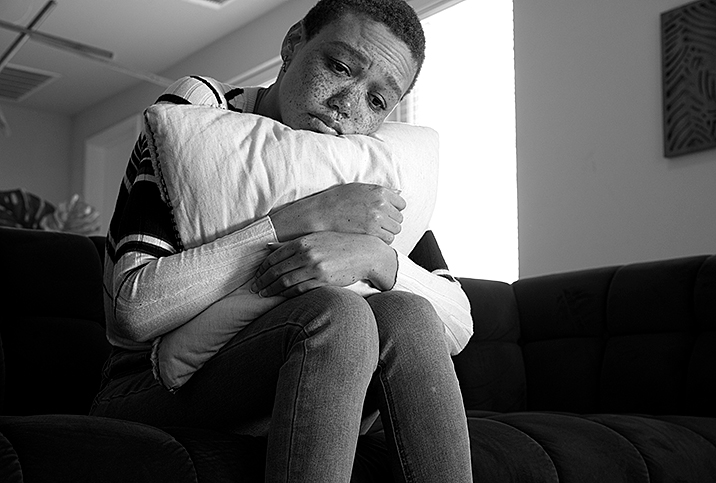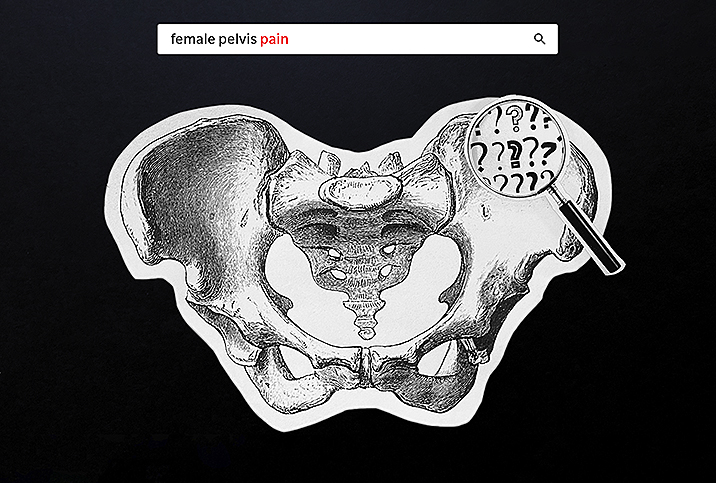What's the Connection Between Pudendal Neuralgia and Chronic Pain?

Pudendal neuralgia—also known as pudendal neuropathy—is an irritation or compression of the pudendal nerve, which can lead to chronic pain, potentially affecting your ability to use the bathroom and have sex.
It's easier to understand the condition if you first understand the pudendal nerve, which runs from the back of the pelvis to the base of the penis or vagina, where it then branches off into other nerves. The pudendal nerve provides sensation to your genitals, anus and other body parts.
In addition, the pudendal nerve provides sympathetic fibers that control erectile tissue critical for intercourse and the sphincter muscle, which opens and closes when you're using the bathroom. Damage or irritation to the pudendal nerve causes pudendal neuralgia.
Irritation or injury to the pudendal nerve can occur suddenly—for example, after breaking your pelvis or after surgery or childbirth. Other known causes include sustained pressure on the pelvis through aggressive bike riding, weightlifting and prolonged sitting, and even chronic constipation. Compression of the nerve by nearby muscles—also known as pudendal nerve entrapment—may also cause pudendal neuralgia.
In many cases, doctors are unable to pinpoint the exact cause of pudendal neuralgia.
Symptoms and diagnosis
The International Pudendal Neuropathy Association estimates the incidence of this condition is 1 in 100,000, although some practitioners believe the rate is higher. Because pudendal neuralgia is uncommon, symptoms are likely to first be attributed to other causes or diseases, sometimes leading to a misdiagnosis or delayed diagnosis.
The most commonly reported symptom is pelvic pain when sitting, which becomes less intense when standing or lying down. Patients report pain in the genital region or closer to the rectum. Pudendal neuralgia pain is often described as a sharp or burning sensation, numbness or a swollen feeling. Symptoms may also include a sudden urgency or frequent need to go to the bathroom or pain and other problems during sex. It can also be challenging to achieve or maintain an erection with pudendal neuralgia.
If you have pain in your pelvic area, your doctor may require a complete medical history to determine if there has been any recent trauma or injury that could be to blame. A medical examination may also include a vaginal or rectal exam, or an MRI scan. Additional tests will help rule out infections, tumors or cysts that might cause similar pain in this area. If your doctor suspects pudendal neuralgia, a nerve blocker or pain killer may be injected around the nerve to see if the pain lessens. Improvement with a nerve blocker is a sign you may have damage or irritation to the nerve.
Treatment and long-term care
Treatment of pudendal neuralgia can include a combination of lifestyle changes, physical therapy and medications. Spending more time standing instead of sitting and changing how you exercise in consultation with a physical therapist or replacing exercises like weightlifting or cycling can help, especially if these issues were suspected to be responsible for your pudendal neuralgia in the first place. Physical therapy can relax and stretch the muscles of the lower pelvis, sometimes improving bladder control by strengthening the pelvic muscles.
Your doctor may also surgically implant a small device under the skin to deliver mild electrical impulses and interrupt signals to the brain. Muscle relaxants or nerve blockers can help relieve lower inflammation. If needed, surgery can be done to remove the pressure on the nerve, although this is usually reserved only as a last option in rare cases.
You should seek medical care right away if you experience symptoms of pudendal neuralgia or any new neurological change in status, numbness, or difficulty or loss of control in urinating or bowel movements. The pain can worsen without proper treatment, and early intervention can help you get the condition under control quickly. It may take some time to find the best treatment or treatments for you, but try to stay patient and work with your doctor to find solutions that fit your lifestyle.
The pain can worsen without proper treatment, and early intervention can help you get the condition under control quickly.
There are a lot of "alternative" treatments/therapies, which should be considered as second-line after a discussion with a doctor to avoid misdiagnosis or just to rule out something more severe, like a spinal cord or nerve-related injury or pathology.
With your doctor's approval, you can speak to a clinician for support on modifying your sexual habits, getting psychotherapy for chronic pain management and even trying yoga for pelvic pain. There are plenty of options to address your concerns and stop pudendal neuralgia from disrupting your quality of life.



















